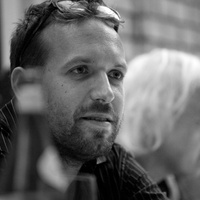Nick Stang
University of Toronto, Philosophy, Faculty Member
- University of Miami, Philosophy, Faculty Memberadd
- German idealist, born too late.edit
Kant's Modal Metaphysics examines Kant's views on the nature of possibility, actuality and necessity. In Chapter 1 I discuss Kant's pre-Critical rejection of the theory of possibility shared by Leibniz, Wolff... more
Kant's Modal Metaphysics examines Kant's views on the nature of possibility, actuality and necessity. In Chapter 1 I discuss Kant's pre-Critical rejection of the theory of possibility shared by Leibniz, Wolff and Baumgarten. I highlight two principles that are decisive for Kant's ...
Research Interests:
Research Interests: Philosophy and Nous
Research Interests:
Research Interests:
Most commentators agree that the Schematism chapter plays a very important role in the Critique of Pure Reason (CPR). But there is little agreement on what role, exactly, the Schematism is supposed to play and how successfully it plays... more
Most commentators agree that the Schematism chapter plays a very important role in the Critique of Pure Reason (CPR). But there is little agreement on what role, exactly, the Schematism is supposed to play and how successfully it plays that role. Many commentators consider it a failure. My aim in this paper is to provide an interpretation of the role of the Schematism and a qualified defense of its main doctrines. The topic of the Schematism is the “subsumption” of objects under concepts, as the first sentence announces: “in all subsumptions of an object under a concept [. . .]“ (A137/B176). Its primary aim is to explain how it is possible for sensible objects to be subsumed specifically under the pure concepts of the understanding (categories). That much is relatively clear. However, “subsumption” admits of two different readings, which previous commentators have not carefully distinguished. In one sense, an object a can be said to be subsumed under a concept F just in case some subject thinks of a that it is F. In another sense, though, an object is only said to be subsumed under a concept when it instantiates that concept, e.g. when a is F. The first notion of subsumption is neutral on the truth of subsumption, whereas, on the second reading, subsumptions as such are true. In this paper I argue that this ambiguity in “subsumption” is the key that unlocks the argument of the Schematism.
I raise a problem about the possibility of metaphysics originally raised by Kant: what explains the fact that the terms in our metaphysical theories (e.g. " property ") refer to entities and structures (e.g. properties) in the world? I... more
I raise a problem about the possibility of metaphysics originally raised by Kant: what explains the fact that the terms in our metaphysical theories (e.g. " property ") refer to entities and structures (e.g. properties) in the world? I distinguish a meta-metaphysical view that can easily answer such questions (" deflationism ") from a meta-metaphysical view for which this explanatory task is more difficult (which I call the " substantive " view of metaphysics). I then canvass responses that the substantive metaphysician can give to this Kantian demand for an explanation of reference in metaphysics. I argue that these responses are either inadequate, or depend, implicitly or explicitly, on the idea of " joint carving " : carving at the joints is part of the explanation of reference-facts quite generally and our metaphysical terms in particular refer because they carve at the joints. I examine Ted Sider's recent work on joint carving and structure and argue that it cannot fill the explanatory gap. I conclude that this is reason ceterus paribus to reject the substantive view of metaphysics. Kant's critique, far from being obsolete, applies to the most cutting-edge of contemporary meta-metaphysical views.
